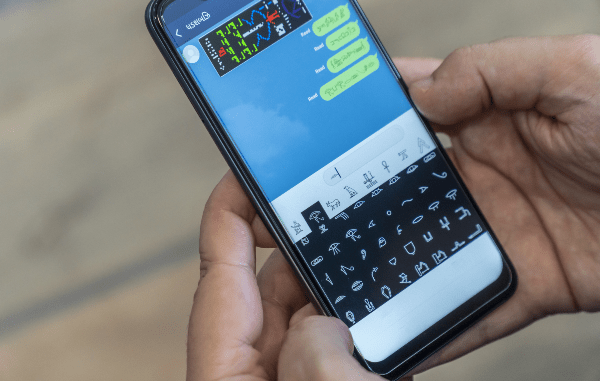

An Arecibo message, the format in which scientists will be transmitting their signal to extraterrestrials. Photo 156151076 © Nikolay Stoimenov | Dreamstime.com
Scientists at NASA’s Jet Propulsion Laboratory (JPL) are remaking a message originally sent out to extraterrestrials in 1974 that tells other planets what humanity and Earth are like.
On November 16, 1974, humankind sent out the first interstellar message, broadcasted as a radio message via the Arecibo telescope. It would take more than 25,000 light-years for it to make its way to its destination, the globular star cluster Messier 13.
And even if it does finally reach it (progress is only at 0.2% so far), aliens might have difficult interpreting it due to the image’s low resolution.
The missive, called the Arecibo message, looks like this:
Image via Arne Nordmann / Wikimedia Commons (CC BY-SA 3.0)
To the everyday human, the image just looks like an abstract drawing with a person—and doesn’t appear too far off from a Keith Haring mural.
In actual fact, it is a binary-encoded piece containing 1,679 bits of data, which paints a picture of the digitals one to 10, elements that make up human DNA (hydrogen, carbon, nitrogen, oxygen, and phosphorus), and the average height of a human man, among other details.
To crack the puzzle, the recipient would need to figure out that it has to be broken down into the “artificial” prime numbers 23 and 73, in addition to reading the spaces as paragraphs and the start of a new detail. The data is arranged in a structure of 73 rows and 23 columns, written from left to right and intended to be deciphered downwards, as well as color-coded to distinguish sections.
A more attention-grabbing ad for busy, modern aliens
A team of scientists at NASA’s JPL, led by Jonathan H. Jiang, are now intending to convey a more detailed version of the Arecibo message, as detailed in a new paper published in .
Jiang says the aim of the new design is to capture the most amount of information about the human species and society in the most concise way, as reported by .
Interestingly, the updated message now contains a return address that potential recipients can use to locate Earth in the galaxy.
Astronomers propose new Arecibo Message for SETI efforts (including some maths and physics concepts)https://t.co/gifl8XYlBg #arxiv pic.twitter.com/3KpuwxPCSc
— Michael Banks (@Mike_Banks) March 10, 2022
Can aliens even grasp binary code? Scientists fathom they do, and they are confident that technologically-advanced neighbors would be able to decode the message, as well as understand the importance of maintaining a peaceful relationship.
Jiang adds that if extraterrestrials were to reply to this “simple but meaningful” missive, their language would include “similar information content.”
But the timing’s not right… for now
The team cannot deliver the message yet as the Arecibo radio telescope collapsed in 2020. They’ll have to work with either the Allen Telescope Array or China’s FAST telescope, both of which will still require upgrades to be able to support broadcasts.
With that being said, the team gathers that the best time to send out the message would be in March or October, when Earth sits at a 90-degree angle between the Sun and the center of the Milky Way.
Scientists are projecting for the message to be sent out in 2024, making it for the 50th anniversary of the original Arecibo message.
A Beacon in the Galaxy: Updated Arecibo Message for Potential FAST and SETI Projects. https://t.co/Z5UBRgvkS0 pic.twitter.com/bhQYkTOqE4
— George Alexakis (@dzHTX1Q3tIsaVN4) April 5, 2022
If I were an alien (if there is such a thing) I would think: Holy Shit ! We should really stay away from these weird and crazy guys.
,,A Beacon in the Galaxy: Updated Arecibo Message for Potential FAST and SETI Projects”https://t.co/Ni9v4V9ARC pic.twitter.com/x3u1Lawss5
— The Hodling Philosopher (@thehodlphily) March 29, 2022
[via
http://www.designtaxi.com/news/418305/NASA-Scientists-To-Send-Pamphlet-To-Extraterrestrials-To-Establish-Connection/


Leave a Reply